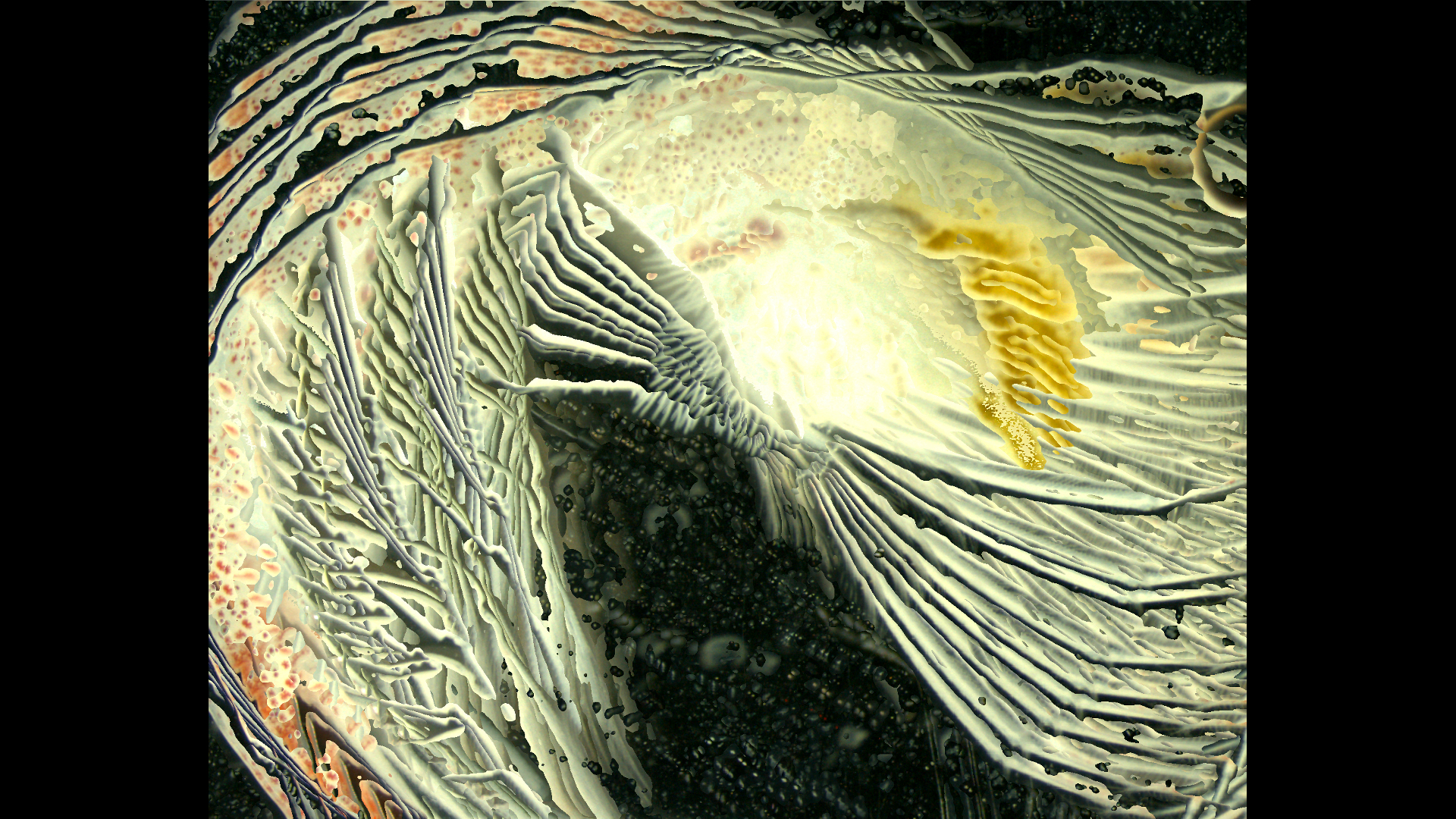
Euphausia superba (Antarctic krill) 2019. Microscopy: Maddison Gibbs. Technology and guidance courtesy Australian Antarctic Division

Euphausia superba (Antarctic krill) 2019. Microscopy: Maddison Gibbs. Technology and guidance courtesy Australian Antarctic Division
Euphausia superba (Antarctic krill), a.k.a. Lisa Roberts: "...If you were to see the whole of me you may only see my big black eyes, greeny gut, and glowing red tail. As I swim, my pleopods and feeding basket bits move so fast you barely see. But you may feel the water turbulence I make. Sometimes, in the dark, I fluoresce. I love that you see my greeny-yellow stomach full of phytoplankton I have eaten. That gorgeous colour is chlorophyll A, a dye in the phytoplankton that enables photosynthesis. Quite magical, really, when you think that light is the source of most of what we know as life, and just how many krill there are, and how many whales."
James O'Brian: "... You always hear that krill are keystone species, but THAT is a keystone environment - the Southern Ocean. It is SO influential and SO productive, that to lose it, to have it damaged by something as short-sighted as monetary gain, I think that would be devastating for..."
Lisa: "...devastating for the whole planet?"
James: "Yes... I would actually love to see someone who was primarily motivated by money to see just how, if you put them face to face with a krill, allow them to have a blue whale breach right next to their boat - that's priceless, that is. And I guess, I hope, that it would re-engage them into nature, realise the actual worth of that environment."
Krill health 2019. Story: James O'Brien, University of Technology Sydney. Whale sonograph: Brian Miller, Australian Antarctic Division. Music: Graeme Ewing and Rupert Summerson. Animation: Lisa Roberts.